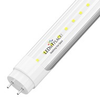Look around, and you’ll notice that there is a difference between lighting conditions of various rooms in the same building. There are good reasons for the dissimilarity between the lighting fixture installation in different places of a home, office, or any other building. Every lighting fixture that you’ll buy offers a particular color temperature that denotes the hue of the light it emits. If you are to make the most of the chosen lighting fixtures, the knowledge of color temperature is essential.
Having an idea about different color temperatures will help decide on the right lighting fixtures that will offer the desired ambiance and illumination. Here, we will discuss a few points in detail so that you get a clear understanding of various aspects of color temperature.
What is Color Temperature?
Color temperature is the measure of perceiving the appearance of a black body when its chromaticity coordinates fall on the Planckian locus. In other words, color temperature is The unit of measuring how red or blue is the appearance of any light source. The unit of measuring the color temperature of a light source is degree kelvin (K).

What is Correlated Color Temperature?
The chromaticity coordinates of artificial lighting fixtures such as incandescents, CFLs, and LEDs (among others) do not fall on the Planckian locus. Instead, they lie nearby. Thus, the correlated color temperature (CCT) is the measure of the appearance of its illumination in comparison with natural light sources. (such as a candle, sun or star) The unit of measuring the CCT of artificial light sources (LEDs, CFLs, metal halides, etc.) is also degree kelvin (K).
Color temperatures V/S lighting needs
Different rooms of your home or office serve a variety of purposes. Hence, it is essential to keep the goal in mind while planning the lighting design, as these fixtures offer specific color temperatures. In general, the lighting design of a home or office includes three main types of lights: General lighting fixtures, Task lighting fixtures, Ambient lighting fixtures. To experience the right illumination conditions, you should incorporate all three kinds of fixtures in the lighting design of a facility.
General lighting Fixtures:
These lighting fixtures are responsible for providing a room/facility with adequate amounts of light. LED light bulbs, CFLs, fluorescent tubes, and metal halide bulbs are some examples of fixtures that one can use for general lighting purposes.
Task lighting fixtures
ie in a range of 1,000-10,000 K. Most artificial lighting fixtures are available in CCTs ranging from 2000K to 6500k and above. Referring to the information that follows will help when buying fixtures for the general, task, or ambient lighting purposes :

2000K -3000K:
Fixtures in this CCT range provide soft white glow making them suitable for use in living rooms and bedrooms.
3100K-4500K:
This CCT range is typical in fixtures that offer bright white light. (that resembles daylight) Such lights are suitable for use in kitchens and offices.
4600K-6500K:
The lights that fall in this CCT range offer bright blue-white color appearance. Such lights are useful in spaces that need bright and even lighting. (example: parking lots)
6500K and above:
Lighting fixtures that fall in this CCT range offer bright blue hue. These lighting fixtures are ideal for use in warehouses and other commercial lighting projects.
The color temperatures of natural vs. artificial sources of light
Understanding color temperature can be tricky, as one can mistake it for the actual temperature of a light source. For example, the sun has a lower color temperature than the sky, but it is hotter. If you relate the ‘actual temperature’ of the sun and Earth’s surface to the ‘color temperature,’ you’ll fail to understand the difference between hue and saturation.
The color temperature above the Earth’s surface is about 5900K. The sun may appear red, orange, white, or yellow, depending upon the time of day. On the other hand, the bright blue sky’s color temperature varies between 15,000-27,000K.

The sun is a giant source of light and other radiations, and its energy spreads over the area of a sphere that has a radius of 93,000,000 miles. Also, not all light (and other emissions) coming from the sun reach the Earth’s surface. The sunlight reflects through layers of the atmosphere (and most blue light scatters). As a result, the sky appears blue.
The case of LEDs and other lighting fixtures is also the same. CCT ratings denote the color appearance and not the actual temperature of the light source. In simple words, high Kelvin values mark for a more relaxed light appearance. (blue and white hues)
Now, you have the relation between CCT, light fixtures, lighting design, and illumination conditions. We hope that this knowledge will help you choose the right lighting fixtures for your home and office. If you want to continue reading and find out more about LED lighting fixtures scroll through our blogs, or send us a query at info@ledmyplace.com.


















































































